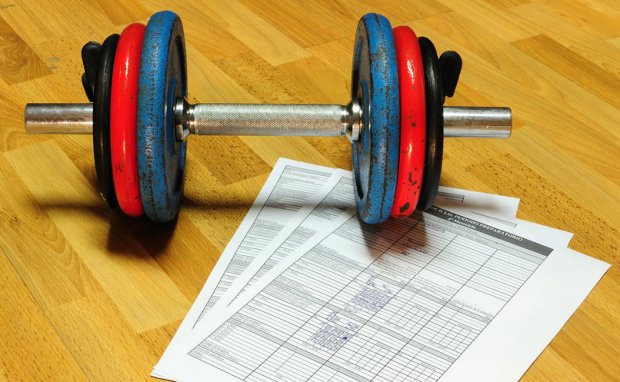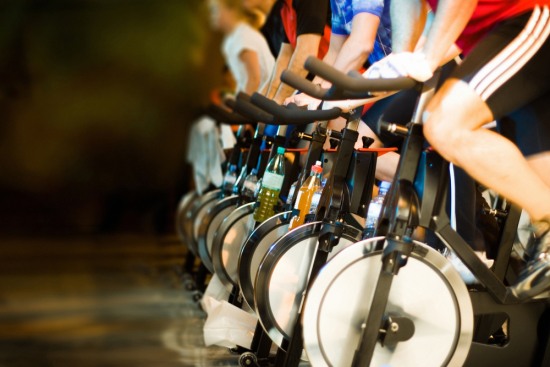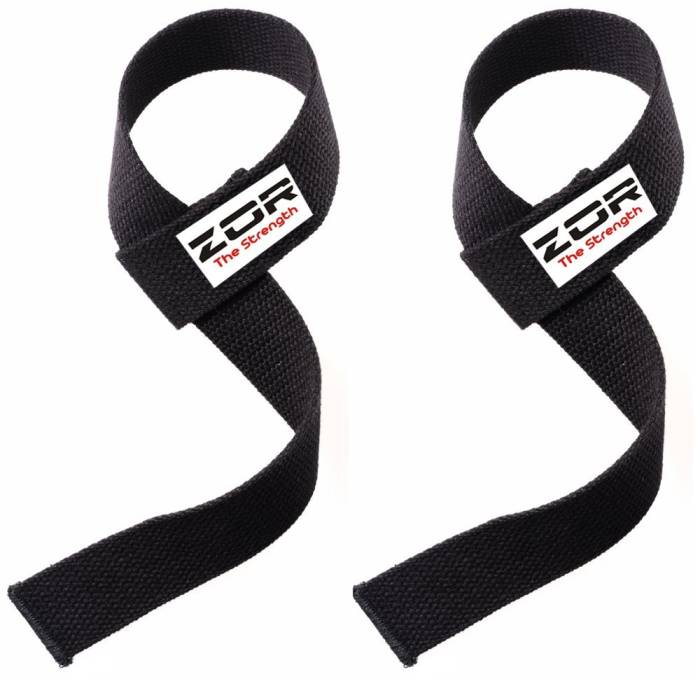Superset Workout Guide #2: Biceps and Triceps
Before we start getting too involved with exercise selection, it’s important to first plan when you’ll actually be performing this workout.
Timing and preparation
In comparison with muscle groups such as your hamstrings and glutes, the bicep is actually quite a small muscle to train, so it’s important to limit any risk of over training.
In most cases, if you’re looking to superset biceps and triceps, you’re going to want to allocate a specific day in your weekly training schedule. You shouldn’t look to mix this combination in with any other muscle group training.
In terms of where this occurs in relation to your other weekly workouts, it’s best to perform the workout at least two days after your back or chest workout.
So for a 4 day training split, you might choose to work chest on Monday, Back on Tuesday, have 2 days off for recovery, then on the Friday work arms.

Try to train arms as far away from chest and back days as possible for maximum recovery
In order to ensure your triceps and biceps are fully recovered, this may take some trial and error with your sleep, nutrition, and supplement cycles.
If you’re not quite feeling ready on the Friday and your triceps are still sore from the chest workout, try to get an extra hours sleep each night.
If that doesn’t work, try increasing your protein intake by 30g per day for 4 weeks and see if your muscles recover any quicker. If you’re still not quite ready, then as a final resort (natural options should always be prioritised where possible), try adding an extra recovery supplement.
This can be anything from a cassein shake before bed, to glutamine mixed in with your pre and post workout drinks.
[divider]
Where does my shoulder training fit in?
One of the biggest issues you’ll have when planning a bicep and tricep superset workout is knowing when to schedule in your shoulder training.
Ideally, this should be performed on the same day as chest. Depending on your exercise plan, you’ll probably be doing a number of heavy pressing movements, which will warm your shoulders up for more direct exercises later on in the workout.
It’s best to do larger compound movements first in this case, such as flat bench press, followed by incline barbell press, and standing military presses.
This should ensure that your shoulders are ready to play a supportive role in your bicep and tricep superset, which is particularly useful if you want to include dips or the close grip bench press.
[divider]
Exercise selection
In terms of size, we’re training much smaller muscle groups for this arm workout than we were in our previous superset of chest and back. This means that the volume of exercises won’t be as high.
To stay within our 45 minute to 1 hour guideline for the workout duration, this also means that we will be performing 3 exercises for your biceps, and 3 for your triceps.
As our time plan shows later on, this also leaves us enough time to warm-up with lighter weight for a few sets per muscle group, and stretch between sets where required due to the slightly longer rest periods.
Bicep exercise 1: Dumbbell curls
This really comes down to more of a question of personal preference, but we tend to find that dumbbell curls put less pressure on the wrists compared to barbell curls.
Using dumbbells also allows you to focus on each bicep muscle individually, which should hopefully result in better form, and reduce the risk of using momentum to swing the weight up.
Bicep exercise 2: Hammer curls
Again, this is an exercise that is best performed with dumbbells, standing up.
Alternative variations include the incline hammer curls where you lie on an incline bench, and using a rope attachment connected to a low cable pulley.

Isolateral dumbbell hammer curls are the best way to isolate the brachialis when maintaining good exercise form
The low cable option certainly has the benefit of more continuous tension on the muscle, but the reason we’ve chosen dumbbells is because they offer a much greater freedom of movement.
You can quickly switch from more of a linear movement with your elbows by your sides, to more of a lateral movement, where you bring the dumbbell up across your body.
There will be a slight difference in the weight you can lift for each variation, but both are equally as effective at targetting the brachialis.
Bicep exercise 3: Seated concentration curl
With the dumbbell and hammer curls doing most of the mass building in the lower rep ranges, it’s also important to include some sets with higher repetitions to full engage the slow twitch muscle fibers.
We favour the seated concentration curl, as it’s much more difficult to ‘cheat’ on your exercise form, which can be an easy trap to fall into later in the workout when your energy levels are dropping.
If you’re looking to build more mass however, then you can always switch these concentration curls for a reverse cable curl, using either a straight or EZ-bar attachment.
The reverse grip targets your biceps and forearms, while the cable has been chosen instead of free weights due to its ability to keep continuous tension on the muscle.
With a free bar, the lower portion of the range of motion makes it possible for tension to be taken off the bicep almost completely, which isn’t what we’re looking for when we perform a superset (the primary goal of which is to increase intensity).
Tricep exercise 1: Close grip bench press
In much the same way as the bicep exercises, we’re going to start with the heavier, mass-building, low rep strength work first, then scale the weight down later in the workout.
The exercise that we’re going to superset with dumbbell curls is the close grip bench press. While a conventional double overhand grip on the bar is recommended, we also suggest switching to an underhand grip (reverse grip) to see which version targets your triceps best.
Also, if you’re looking to take your shoulders out of the movement and focus more on overloading the triceps during the top portion of the press, don’t be afraid to setup for this exercise in a smith machine or power cage.
Tricep exercise 2: Lying tricep extensions
Lying tricep extensions will be our choice of exercise to superset with the hammer curls, which are best performed with an EZ curl bar to relieve pressure on the wrists.
Unlike the close grip bench press, this probably won’t be an exercise where you’re able to lift a lot of weight.

Try to avoid bringing the bar too far back to prevent the stronger lat muscles taking over the lift
There are actually a few different versions to be aware of, but we’re going to focus on the main 3.
[checklist]
- 1. Hand position – Lying tricep extensions can be performed with a close or wide grip, depending on where you feel the greatest activation of your triceps.
- 2. Mid-point – Although the bar will start just behind your head’s position on the bench (to keep the tension on the triceps) and at full arm’s length, there are actually two places you can lower the bar to.Your options are the forehead, and just above your head. Lowering the bar to just above your head will allow you to use more weight, but can also start recruiting your lats to do more of the work.Lowering to the forehead requires more control, but does keep more of the tension on the triceps.
- 3. Bench incline – Just because we’re talking about lying tricep extensions, doesn’t mean we mean a flat bench. Experiment with low inclines up to around 30 degrees, and see if you can achieve a greater stretch. This is generally more beneficial for if you’re opting to lower the bar just above your head.
[/checklist]
Tricep exercise 3: Rope curls
Rope pressdowns are supersetted with concentration curls to complete the workout, as they target the tricep through a grip position and range of motion that hasn’t yet been used in our two previous exercises.
There’s little to no pressure on your wrists, very low risk of injury, and you will usually be able to make minor adjustments to the weight very quickly, due to using a weight stack in a cable machine as the resistance.
To ensure constant tension on the tricep, always keep the angle at the elbows to at least 60 degrees, and resist the temptation to let the rope rise higher than chest level.
[divider]
Sample routine
supersetted with
Tricep Exercise 1: Close Grip Bench Press
(Warm up round) Sets: 2, Reps: 10-12, Rest between sets: 2 mins 30 secs
(Work sets) Sets: 3, Reps: 4-6, Rest between sets: 2 mins 30 secsBicep Exercise 2: Dumbbell Hammer Curls
supersetted with
Tricep Exercise 2: Lying Tricep Extensions
Sets: 3, Reps: 8-10, Rest between sets: 2 mins 30 secsBicep Exercise 3: Concentration Curls
supersetted with
Tricep Exercise 3: Rope Pressdowns
Sets: 3, Reps: 10-12, Rest between sets: 2 mins 30 secs
[divider]
Conclusion
So in summary, if you’re looking to make variations to the routine listed above, try to bear the following points in mind when creating your own workout plan:
[checklist]
- Group the low-rep compound exercises together at the start
- Maintain a similar rep range for the exercises performed as part of each group
- You don’t have to change the bicep AND tricep exercise when you want to vary a routine. In our example above, you could always choose to keep going with the close grip bench press, but switch to EZ-curl bar curls instead of the dumbbell curls.
- Plan ahead with the weights and equipment you need. Try to keep everything as close together as possible to ensure everything you are going to use is available when the time comes, particularly if you workout at busier times of day.
- Don’t be tempted to add extra exercises if you finish early. You’re supersetting, which means less rest between sets. Your workouts are supposed to finish earlier, so don’t add more sets and exercises just to fill the hour. You’ll run the risk of over training.
[/checklist]






